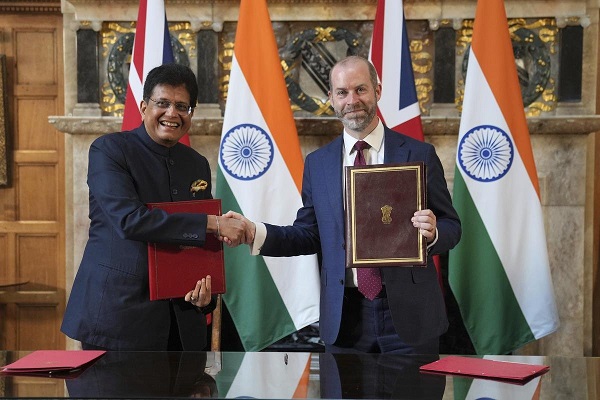.png)
Truce Without Treaty, Powell’s Echo Lingers, Markets Eye Liquidity Strain
A quick take on global markets before the noise begins.

Venkat Thiagarajan is a currency market veteran.
October 31, 2025 at 5:16 AM IST
The United States and China reached a kind of truce, a handshake rather than a signature. Optimists read it as recognition that the status quo had become unsustainable; cynics call it a tactical pause. President Trump rated the meeting “12 out of 10,” but markets know better. It is a framework, not a deal, and as Canada’s experience shows, such understandings can unravel overnight. Given the enduring mistrust between Washington and Beijing, traders see this as temporary de-escalation, not détente.
US: A day after the Fed chair Powell’s unusually direct attempt to correct market pricing, investors are still parsing his intent. Powell said cuts are not a foregone conclusion, and that alone has reset expectations firmly hawkish. The Fed’s message—ease once, talk tough—has left traders struggling to square liquidity support with policy caution.
Treasury supply looms large. Next week’s quarterly refunding will remind markets that the real driver of rates is issuance. The Treasury may project $697 billion of net marketable borrowing this quarter and $795 billion in the first quarter of 2026, a supply pipeline that ensures any rally in bonds will be met by paper.
Stress signals flicker: Discount-window usage has climbed to its highest level since the SVB collapse, hinting either at emerging liquidity tightness or at confidence that is wearing thin. It recalls PNC CEO William Demchak’s warning that tapping the facility for anything beyond testing “tells the world you’ve failed.” It may be premature to call this a crisis, but the comfort line is creeping closer.
Europe: The ECB meeting passed quietly, with President Lagarde noting that downside risks are receding. Better hard data and a steadier ECB have traders expecting the euro-swap curve to steepen, while EUR/USD eyes 1.1542, the October low, before a potential 1.1504 retrace—the 78.6 % mark of the August–September rise.
Sterling: The focus has shifted to the budget. The November fiscal statement remains the next major UK risk event. A close below 1.3140 would open 1.2943, retracing half the 2025 rise. Markets are cautious that Chancellor Starmer’s policy latitude is shrinking faster than growth itself.
Asia: China’s data had dimmed the optics of the truce. Manufacturing PMI contracted for a seventh straight month, hitting a six-month low. The government’s preference for manufacturing over consumption continues to deliver large surpluses but risks entrenching deflation. The trade framework may soothe politics, but it does nothing for domestic demand.
Tokyo changes its tone: New Finance Minister Katayama has already walked back her March remark that the yen’s fair value lay near 120–130. The revision is timely: October CPI rose 2.8 % y/y against expectations of 2.4 %, while retail sales gained 0.5 % y/y. Traders see room for USD/JPY to retest 154.80, the February 12 high, as policy normalisation remains distant.
Rupee drift continues.: The USD/INR climbed into the 88.70 zone with barely a pause. With month-end and weekend ahead, consolidation between 88.50 and 88.70 looks the path of least resistance. The Reserve Bank’s comfort band has become the market’s as well.
Daily Quip
Every handshake buys a headline, every warning another hour of calm.
In a world of temporary truces, conviction remains the only missing collateral.



